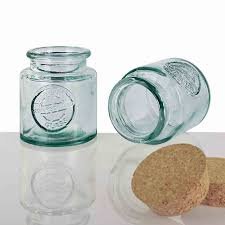Choosing the right storage container for your food can have significant impacts on its quality, safety, and freshness. The ongoing debate between glass jars and plastic jars has garnered attention from eco-conscious consumers, health advocates, and kitchen organizers alike. With the rise of sustainable living and a heightened awareness of food safety, many people are looking for the best option that balances durability, practicality, and environmental friendliness.
This article will provide an in-depth comparison of glass jars and plastic jars, exploring their pros, cons, and ideal use cases. Whether you’re looking to optimize your pantry or seeking sustainable storage solutions, understanding the benefits of each material is essential.

1. Materials Overview: Glass vs. Plastic Jars
What Are Glass Jars?
Glass jars are made from a variety of materials, most commonly soda-lime glass and borosilicate glass. Glass has been used for centuries as a food storage medium due to its non-reactive nature and ability to preserve freshness. Modern glass jars are widely used for canning, preserving food, and long-term storage of pantry staples like grains, nuts, and spices.
Types of Glass Used in Food Jars:
| Glass Type | Description | Best Use Cases |
|---|---|---|
| Soda-Lime Glass | The most common type, affordable but less resistant to heat | General pantry storage, canning |
| Borosilicate Glass | More durable, resistant to extreme temperature changes | High-heat storage, baking, freezing |
What Are Plastic Jars?
Plastic jars, commonly made from PET (Polyethylene Terephthalate) or HDPE (High-Density Polyethylene), are widely used in the food industry. Their popularity stems from their lightweight and cost-effective nature. Plastic jars are often used for short-term food storage, on-the-go meals, and bulk packaging.
Common Plastic Materials in Food Jars:
- PET: Commonly used for bottled drinks and bulk food packaging.
- HDPE: Used for more durable plastic jars, especially those requiring high resistance to moisture and chemicals.

2.Durability and Lifespan
Durability of Glass Jars
Glass jars are renowned for their durability, especially when it comes to handling heat and cold. Borosilicate glass, for instance, can withstand sudden temperature changes, making it ideal for both the oven and freezer. While glass is rigid and sturdy, its primary drawback is its tendency to shatter upon impact.
- Pros:
- Resistant to high and low temperatures.
- Ideal for long-term storage and canning.
- Non-reactive with food, ensuring no change in taste or smell.
- Cons:
- Fragile if dropped.
- Heavier compared to plastic.
Durability of Plastic Jars
Plastic jars, particularly those made from HDPE and PET, offer excellent flexibility and are generally shatterproof. They are a practical choice for storing foods that are often handled, transported, or consumed on the go. However, plastic’s resistance to wear and tear can diminish over time, leading to issues like warping or cracking.
- Pros:
- Lightweight and virtually unbreakable.
- Great for on-the-go or outdoor storage.
- Cons:
- Can warp under extreme heat.
- More prone to scratches and wear.

3.Health and Safety Considerations
Are Glass Jars Safer for Food Storage?
Glass jars are generally considered one of the safest options for food storage. Glass is inherently chemical-free and non-reactive, meaning there’s no risk of harmful chemicals leaching into your food. This makes glass jars a safe option for storing acidic or oily foods, which can otherwise react with certain plastics.
- BPA-Free: Glass does not contain Bisphenol A (BPA), a chemical found in some plastics.
- Odor and Flavor Preservation: Glass ensures food retains its original taste and smell, without any lingering odors.
Are Plastic Jars Safe for Food Storage?
Plastic jars made from BPA-free materials are widely used for food storage, but there are still concerns about microplastics and chemical leaching, especially when exposed to heat. It’s important to avoid microwaving or placing hot foods directly in plastic jars, as this can lead to chemical breakdown and the release of harmful substances.
4.Environmental Impact: Which is More Sustainable?
Glass Jars and Sustainability
Glass is widely recognized as an eco-friendly option. It is 100% recyclable without any loss of quality, and many glass jars can be repurposed or reused multiple times. The environmental impact of glass primarily comes from its energy-intensive production process and its weight, which increases transportation emissions.
- Recyclability: Glass can be infinitely recycled.
- Upcycling Potential: Glass jars can be creatively reused in various ways around the home.
Plastic Jars and Environmental Concerns
While plastic is lightweight and easy to produce, its environmental footprint is concerning. Plastic production is fossil-fuel dependent, and many plastic jars are non-biodegradable. Although some plastics are recyclable, the reality is that much of the world’s plastic waste ends up in landfills or oceans.
- Recyclability: Plastic recycling is limited by the type and quality of the material.
- Environmental Damage: Plastic contributes to landfill overflow and ocean pollution.
5.Convenience and Practicality in Everyday Use
When considering everyday use, plastic jars excel in lightweight convenience. They’re easy to carry, ideal for picnics, and perfect for children’s lunches. However, glass jars offer superior storage capabilities for long-term use, keeping food fresh for extended periods.
| Feature | Glass Jars | Plastic Jars |
|---|---|---|
| Weight | Heavier, bulkier | Lightweight, easy to carry |
| Storage Longevity | Best for long-term storage | Better for short-term storage |
| Practicality | Ideal for home use, canning | Perfect for outdoor and on-the-go uses |
6.Cost Comparison: Glass Jars vs. Plastic Jars
Aesthetics and Brand Appeal
Glass Jars for Visual Appeal
Glass jars have a timeless, clean appearance that enhances any kitchen space. Many companies choose glass jars for premium branding, especially in the food and beverage industry. Their transparency also makes them ideal for showcasing the contents inside.
Plastic Jars for Practicality
Plastic jars, while less aesthetically pleasing, are more customizable in terms of shape and color. They’re often used for commercial and budget-friendly products where branding plays a lesser role.
Conclusion
Both glass jars and plastic jars have their unique benefits depending on your specific needs. For those prioritizing sustainability, food safety, and long-term storage, glass jars are the superior option. On the other hand, plastic jars offer more convenience for short-term storage, on-the-go use, and budget-conscious consumers. By understanding the strengths and weaknesses of each, you can make an informed decision that best suits your lifestyle and food storage requirements.



